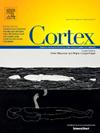Although the peripheral nervous system lacks a dedicated receptor, the brain processes temporal information through different sensory channels. A critical question is whether temporal information from different sensory modalities at different times forms modality-specific representations or is integrated into a common representation in a supramodal manner. Behavioral studies on temporal memory mixing and the central tendency effect have provided evidence for supramodal temporal representations. We aimed to provide electrophysiological evidence for this proposal by employing a cross-modality time discrimination task combined with electroencephalogram (EEG) recordings. The task maintained a fixed auditory standard duration, whereas the visual comparison duration was randomly selected from the short and long ranges, creating two different audio–visual temporal contexts. The behavioral results showed that the point of subjective equality (PSE) in the short context was significantly lower than that in the long context. The EEG results revealed that the amplitude of the contingent negative variation (CNV) in the short context was significantly higher (more negative) than in the long context in the early stage, while it was lower (more positive) in the later stage. These results suggest that the audiovisual temporal context is integrated with the auditory standard duration to generate a subjective time criterion. Compared with the long context, the subjective time criterion in the short context was shorter, resulting in earlier decision-making and a preceding decrease in CNV. Our study provides electrophysiological evidence that temporal information from different modalities inputted into the brain at different times can form a supramodal temporal representation.


